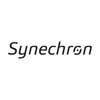
i
Nagarro
Filter interviews by
Nagarro Senior Software Engineer Interview Questions and Answers for Freshers
8 Interview questions
SOLID principles are a set of five design principles in object-oriented programming to make software designs more understandable, flexible, and maintainable.
Single Responsibility Principle (SRP) - A class should have only one reason to change.
Open/Closed Principle (OCP) - Software entities should be open for extension but closed for modification.
Liskov Substitution Principle (LSP) - Objects of a superclass should ...
Clean Architecture is a software design approach that separates concerns and enforces a clear structure for code organization.
Clear separation of concerns between different layers (e.g. presentation, domain, data)
Dependency Rule: inner layers should not depend on outer layers
Use of interfaces to define boundaries between layers
Focus on testability and maintainability
Examples: Hexagonal Architecture, Onion Architec...
MVVM is a design pattern that separates the UI from the business logic, promoting code reusability and maintainability.
MVVM stands for Model-View-ViewModel
Model represents the data and business logic
View is the UI components that the user interacts with
ViewModel acts as a mediator between the Model and View, handling user inputs and updating the Model
Design patterns are reusable solutions to common problems in sof...
Virtual DOM is a lightweight copy of the actual DOM, useState is a hook for managing state in functional components, and Hooks are functions that let you use state and other React features in functional components.
Virtual DOM is a lightweight copy of the actual DOM that React uses to improve performance by updating only the necessary parts of the actual DOM.
useState is a hook in React that allows functional compon...
What people are saying about Nagarro






var keyword has function scope, let keyword has block scope. Closure function is a function defined inside another function.
var keyword has function scope, let keyword has block scope
Variables declared with var are hoisted to the top of their function, let variables are not hoisted
Closure function is a function defined inside another function, has access to the outer function's variables
Middleware in .Net Core is a software component that acts as a bridge between an application's request processing pipeline and the server.
Middleware components are executed in the order they are added to the pipeline.
They can perform tasks like authentication, logging, error handling, etc.
Middleware can be added using the 'UseMiddleware' method in the 'Configure' method of Startup class.
Triggers in SQL are special stored procedures that are automatically executed when certain events occur in a database. Indexes in SQL are used to speed up the retrieval of data from tables.
Types of triggers: DML triggers (insert, update, delete), DDL triggers (create, alter, drop), and Logon triggers.
Indexes in SQL are used to quickly retrieve data from tables. Types of indexes include clustered, non-clustered, un...
Intents in Android are messaging objects used to request an action from another app component.
Intents are used to start activities, services, and broadcast receivers in Android.
There are two types of intents: explicit intents and implicit intents.
Explicit intents specify the component to start by name, while implicit intents specify the action to perform.
Example: Intent intent = new Intent(this, SecondActivity.cla...
Nagarro Senior Software Engineer Interview Experiences for Freshers
3 interviews found
I applied via Naukri.com and was interviewed in Mar 2024. There were 2 interview rounds.
This was mix of aptitude test with questions related to .Net MVC, CSS, HTML and OOPS
(5 Questions)
- Q1. 1. Explain Middleware in .Net Core
- Ans.
Middleware in .Net Core is a software component that acts as a bridge between an application's request processing pipeline and the server.
Middleware components are executed in the order they are added to the pipeline.
They can perform tasks like authentication, logging, error handling, etc.
Middleware can be added using the 'UseMiddleware' method in the 'Configure' method of Startup class.
- Q2. 2. Entity Framework related questions like different approached of entity framework and what is DBContext file.
- Q3. 3. JavaScript: difference between var and let keyword, closure function
- Ans.
var keyword has function scope, let keyword has block scope. Closure function is a function defined inside another function.
var keyword has function scope, let keyword has block scope
Variables declared with var are hoisted to the top of their function, let variables are not hoisted
Closure function is a function defined inside another function, has access to the outer function's variables
- Q4. 4. React: What is Virtual DOM, useState and different types of Hooks in React
- Ans.
Virtual DOM is a lightweight copy of the actual DOM, useState is a hook for managing state in functional components, and Hooks are functions that let you use state and other React features in functional components.
Virtual DOM is a lightweight copy of the actual DOM that React uses to improve performance by updating only the necessary parts of the actual DOM.
useState is a hook in React that allows functional components ...
- Q5. 5. SQL: Different Types of triggers, define index and its types
- Ans.
Triggers in SQL are special stored procedures that are automatically executed when certain events occur in a database. Indexes in SQL are used to speed up the retrieval of data from tables.
Types of triggers: DML triggers (insert, update, delete), DDL triggers (create, alter, drop), and Logon triggers.
Indexes in SQL are used to quickly retrieve data from tables. Types of indexes include clustered, non-clustered, unique,...
Interview Preparation Tips
Skills evaluated in this interview
I applied via Naukri.com and was interviewed before May 2023. There were 3 interview rounds.
Aptitude test for roughly around, 30-40 mins. Easy test.
Coding test on mettle. Good Data structure questions.
(5 Questions)
- Q1. Basic Android questions like DI, MVVM, Clean architecture.
- Q2. What is MVVM and design patterns
- Ans.
MVVM is a design pattern that separates the UI from the business logic, promoting code reusability and maintainability.
MVVM stands for Model-View-ViewModel
Model represents the data and business logic
View is the UI components that the user interacts with
ViewModel acts as a mediator between the Model and View, handling user inputs and updating the Model
Design patterns are reusable solutions to common problems in software...
- Q3. Explain Clean Architecture
- Ans.
Clean Architecture is a software design approach that separates concerns and enforces a clear structure for code organization.
Clear separation of concerns between different layers (e.g. presentation, domain, data)
Dependency Rule: inner layers should not depend on outer layers
Use of interfaces to define boundaries between layers
Focus on testability and maintainability
Examples: Hexagonal Architecture, Onion Architecture
- Q4. Explain solid principles
- Ans.
SOLID principles are a set of five design principles in object-oriented programming to make software designs more understandable, flexible, and maintainable.
Single Responsibility Principle (SRP) - A class should have only one reason to change.
Open/Closed Principle (OCP) - Software entities should be open for extension but closed for modification.
Liskov Substitution Principle (LSP) - Objects of a superclass should be re...
- Q5. Intents in android
- Ans.
Intents in Android are messaging objects used to request an action from another app component.
Intents are used to start activities, services, and broadcast receivers in Android.
There are two types of intents: explicit intents and implicit intents.
Explicit intents specify the component to start by name, while implicit intents specify the action to perform.
Example: Intent intent = new Intent(this, SecondActivity.class); ...
Skills evaluated in this interview

Leetcode basic and medium problems of
stack & link list and array
(2 Questions)
- Q1. Basic information , about collage and company
- Q2. Why you want to join our company
Interview Preparation Tips
Interview questions from similar companies

Mine sweeper logic for a box click
(1 Question)
- Q1. JavaScript objects
(1 Question)
- Q1. Delete element from linked list
- Ans.
To delete an element from a linked list, update the pointers of the previous node to skip the node to be deleted.
Traverse the linked list to find the node to be deleted
Update the 'next' pointer of the previous node to skip the node to be deleted
Free the memory allocated to the node to be deleted
(1 Question)
- Q1. Expected salary
- Ans.
I expect a competitive salary that reflects my skills, experience, and the industry standards for a Senior Software Engineer.
Research industry standards: For example, Glassdoor or Payscale can provide insights into average salaries for similar roles.
Consider my experience: With over 5 years in software development and expertise in multiple programming languages, I bring significant value.
Location matters: Salaries can ...
Skills evaluated in this interview
What people are saying about Nagarro







I applied via LinkedIn and was interviewed in Jul 2020. There was 1 interview round.
Interview Questionnaire
1 Question
- Q1. I was asked lot of technical questions
Interview Preparation Tips

I applied via Naukri.com and was interviewed before Sep 2019. There were 3 interview rounds.
Interview Questionnaire
2 Questions
- Q1. Domain related stuffs.
- Q2. Framework related questions commonly on the configuration part
Interview Preparation Tips

Senior Software Engineer Interview Questions & Answers
Optum Global Solutionsposted on 26 Aug 2020
I applied via Company Website and was interviewed in Jul 2020. There were 6 interview rounds.
Interview Questionnaire
4 Questions
- Q1. There were 3 technical rounds and 2 techno-managerial rounds conducted for the post of Senior Software Engineer. The techno-managerial rounds were straight forward with an aim to understand your comfort le...
- Q2. In technical round 1, there were questions from Core Java, Microservices, DB, and from few techs that I had mentioned in my resume especially the CI/CD work that I have been doing.
- Q3. In tech round 2, they started with asking questions from the Java collections framework, Kafka, Jenkins, Docker, Git, etc. Few Ques: 1. Internals of HashMap. 2. Programming ques with arrays, String, and ha...
- Q4. Tech round 3 was to test if I can work as a manager in the team, so they gave me scenario-based questions like designing a movie ticket booking system using spring boot. And what all steps/entities I would...
Interview Preparation Tips

Senior Software Engineer Interview Questions & Answers
GlobalLogicposted on 20 Sep 2022
I applied via Recruitment Consulltant and was interviewed before Sep 2021. There were 5 interview rounds.
It contains 40 question with easy to medium questions on English, Logical Reasoning, and aptitude. There is no negative marking
It contains 3 questions easy med hard resp,
(3 Questions)
- Q1. What’s the diff b/w comparator and comparable
- Ans.
Comparator is used to compare objects of different classes while Comparable is used to compare objects of the same class.
Comparator is an interface that needs to be implemented to compare objects of different classes.
Comparable is an interface that needs to be implemented to compare objects of the same class.
Comparator uses compare() method while Comparable uses compareTo() method.
Comparator can be used to sort a colle...
- Q2. What’s your college project and in depth discussion sometimes
- Q3. Serialization, Garbage Collector, Oops concept, Exception, Multithreading Runnable, Marker Interface
(2 Questions)
- Q1. This is a managerial round, they will ask scenario based question like If you have a conflict with your team member how can you handle that? Is it happen in your previous org?
- Q2. What if you have different views from your team Lead how can you speak if he don’t let you speak
- Ans.
Navigating differing views in a team requires tact, respect, and effective communication strategies.
Request a one-on-one discussion with the lead to express your views privately.
Use 'I' statements to communicate your perspective without sounding confrontational, e.g., 'I believe...' instead of 'You should...'.
Seek to understand the lead's perspective first; ask questions to clarify their reasoning.
Propose a structured ...
(1 Question)
- Q1. Its just for fomality and sometimes they will ask you about any topic like what’s your views on girls education etc
Interview Preparation Tips
- Multithreading
- Collections
- streams
- garbage collector
Keep your basics strong
Master of one instead of jack of all

I applied via Referral and was interviewed in May 2021. There were 4 interview rounds.
Interview Questionnaire
1 Question
- Q1. They asked me about ETL development dwh, SQL basic. Be prepared with your basics
Interview Preparation Tips

Interview Questionnaire
4 Questions
- Q1. Solid design principles
- Ans.
Solid design principles are a set of guidelines for writing maintainable and scalable code.
Single Responsibility Principle - each class should have only one responsibility
Open/Closed Principle - classes should be open for extension but closed for modification
Liskov Substitution Principle - derived classes should be substitutable for their base classes
Interface Segregation Principle - clients should not be forced to dep...
- Q2. Datastructures and alogrithms
- Q3. Spring framework
- Q4. Design and Architecture
Nagarro Interview FAQs
Some of the top questions asked at the Nagarro Senior Software Engineer interview for freshers -
The duration of Nagarro Senior Software Engineer interview process can vary, but typically it takes about less than 2 weeks to complete.
Tell us how to improve this page.
Nagarro Interviews By Designations
- Nagarro Senior Engineer Interview Questions
- Nagarro Staff Engineer Interview Questions
- Nagarro Software Developer Interview Questions
- Nagarro Associate Staff Engineer Interview Questions
- Nagarro Senior Software Engineer Interview Questions
- Nagarro Associate Engineer Interview Questions
- Nagarro Software Engineer Interview Questions
- Nagarro Associate Software Engineer Interview Questions
- Show more
Interview Questions for Popular Designations
- Software Developer Interview Questions
- Software Engineer Interview Questions
- Senior Engineer Interview Questions
- System Engineer Interview Questions
- Associate Software Engineer Interview Questions
- Project Engineer Interview Questions
- Senior Software Developer Interview Questions
- Lead Engineer Interview Questions
- Show more
Overall Interview Experience Rating
based on 3 interview experiences
Difficulty level
Duration
Senior Software Engineer Interview Questions from Similar Companies
Nagarro Senior Software Engineer Reviews and Ratings
based on 123 reviews
Rating in categories
|
Associate Staff Engineer
3.3k
salaries
| ₹17 L/yr - ₹31 L/yr |
|
Staff Engineer
3.3k
salaries
| ₹22.5 L/yr - ₹38 L/yr |
|
Senior Engineer
2.5k
salaries
| ₹6.4 L/yr - ₹19.9 L/yr |
|
Senior Software Engineer
1.3k
salaries
| ₹7.8 L/yr - ₹29.7 L/yr |
|
Software Engineer
1.1k
salaries
| ₹4.9 L/yr - ₹11.4 L/yr |

Deloitte

Cognizant

TCS

Accenture
- Home >
- Interviews >
- Nagarro Interview Questions >
- Nagarro Interview Questions for Fresher














